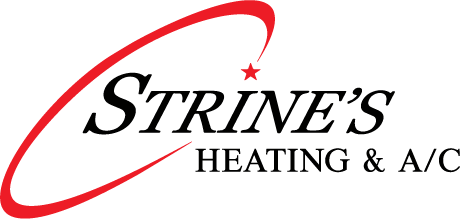
The global transmission of COVID-19 has likely flipped your regular routine all over the place.
When things feel uncertain you can feel good in knowing your residence is your safe space. You’re probably spending more time there today. Consequently your indoor air quality is now more critical than ever.
Did you know we can install indoor air quality products in your home that offer hospital-grade filtration? These solutions can eliminate bacteria from your air, as well as allergens, odors and volatile organic compounds (VOCs).
Today’s residences are tightly airtight, which is good for energy efficiency. But it also means your indoor air could be worse than the air outside. In reality, the EPA says it can be two to five times worse than outdoors. This can be problematic since we spend about 90% of our lifetime indoors.
There are many factors that can contribute to poor indoor air quality, such as cleaning products and air fresheners. These may create headaches and exasperate allergies and asthma.
There’s a combination of steps you can take to better your air quality. Some include improved air filters, an air purification system or an ultraviolet (UV) germicidal light.
Unsure which option is right for your residence? Our expert pros can conduct an indoor air quality audit. Based on the results, we can then suggest the best option for your household’s unique needs.
Keep on reading to learn more about the air quality products we provide.
Air Filtration
When comparing air filters, you should look at the MERV rating, or Minimum Efficiency Reporting Value. This gauges how effectively it filters air.
One of the most ordinary and lowest priced filters, flat fiberglass filters, are graded between 1 and 4 on the MERV register. Pleated filters are a little bit better, ranking between 8 and 12.
We suggest upgrading to at least MERV 13, for example the HC13 Media Air Cleaner, for the most ideal effect. This filter delivers fresher air while reducing energy use.
High Efficiency Particulate Air (HEPA) filters are considered the benchmark in air filtration, as they’re frequently installed in hospitals. They’re effective at catching 99.97–99.99% of indoor pollutants, like pollen, pet dander and smoke.
Ahead of buying an upgraded filter, contact us at 717-864-4554. Our experts can help you select the most ideal solution for your unit.
Air Purification
Lennox provides some of the greatest air purification units you can buy. PureAir™ S and Healthy Climate™ PureAir Air Purification Systems offer hospital-grade filtration while taking care of all kinds of indoor air contaminants.
These powerful units can wipe out:
- 99.9% of allergens, like pollen, dust and pet dander.
- 95% of bacteria-sized particles, such as ones that cause strep throat.
- 50% of VOCs and odors within 24 hours.
UV Germicidal Lights
A UV germicidal light is installed within your heating and cooling system. Its powerful rays wipe out bacteria and mold within seconds.
If your family suffers from allergies or asthma, this system may give relief. Especially if you are in an extremely hot part of the country where bacteria and mold thrive.
This light also provides an additional advantage for your HVAC system. It may help it run longer and run more efficiently, because it keeps the internal parts clean.
Our air quality engineers advise installing one of these lights with an improved filter, such as our Carbon Clean 16® Media Air Cleaner, for the greatest outcome. This filter offers industry-leading MERV 16 filtration in addition to carbon-coated fibers to remove particles from your home’s air. It completes this without restricting your HVAC equipment’s airflow.
Whole-Home Humidifiers
Getting even humidity in your residence may help keep your loved ones in good health when it’s cold. It can aid sore throats, flaky skin and peeling lips, amidst added cold weather bothers.
If you don’t know what your residence’s humidity level is, we’ll measure it when we complete your indoor air quality audit. While the range fluctuates based upon outdoor temperatures, HVAC experts generally advise keeping it between 40–60 percent.
You can accomplish this optimal range with a whole-home humidifier. This equipment typically works with your furnace or air handler to give optimal humidity across your home. Some units, like the Healthy Climate® Whole-Home Power Humidifier, use an incorporated fan to move humidity during the time your HVAC system isn’t operating.
Turn to the Pros for Your Indoor Air Quality Necessities
At Strine's, we’re passionate about making your home more relaxing. That’s why we provide Lennox air quality products, which are the most comprehensive solution you can buy.
We’re also more than just your heating and cooling company. We’re concerned about the wellness of you and your family. That’s why our techs are taking added precautions when we come to your residence.
To find out more about our air quality solution, reach us at 717-864-4554 or contact us online. Our skilled staff can also answer any concerns you may have with a pro coming to your house now.
—
*Based on in-duct testing that shows Healthy Climate® filters reduce airflow restriction. Greater restriction of airflow creates a greater load on a unit’s fan motor, increasing energy consumption.
